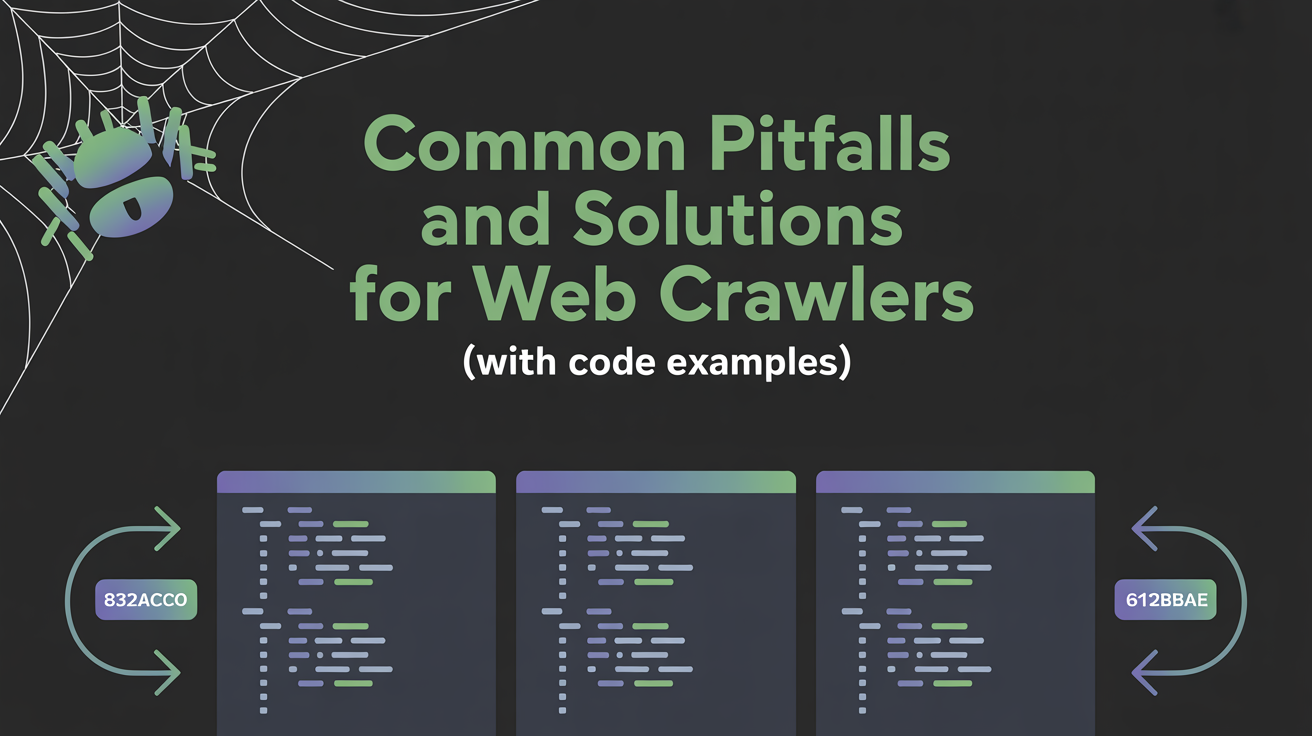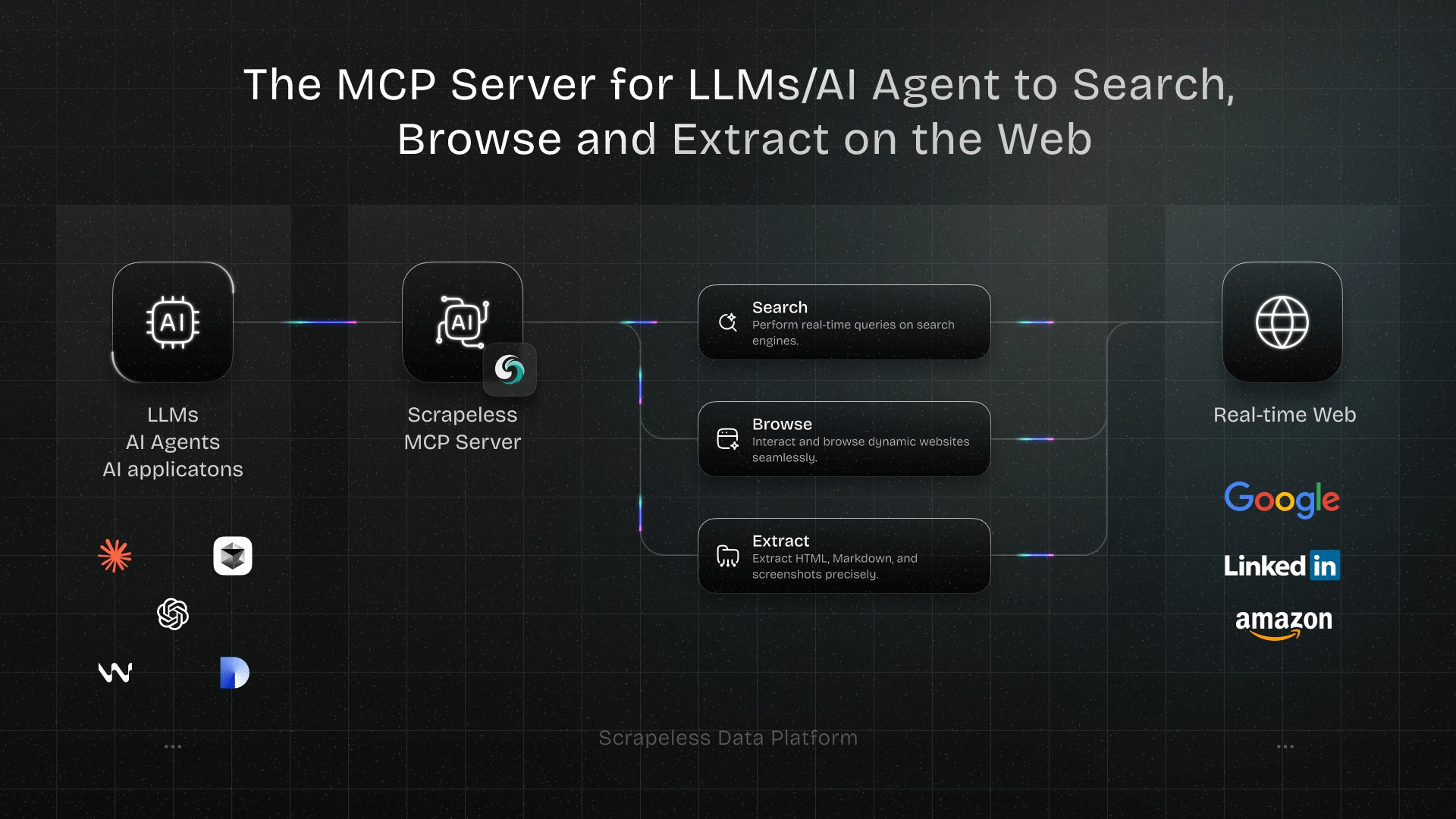网络爬虫的常见陷阱和解决方案(附代码示例)
Expert Network Defense Engineer
网络爬虫不仅仅是发送HTTP请求——它们还必须处理JavaScript渲染、防机器人机制、可扩展性和错误处理。在本文中,我们将探讨开发人员在构建爬虫时面临的常见陷阱,并提供具有代码片段的实用解决方案。
1. 忽视Robots.txt和爬取政策
如果你的爬虫忽略robots.txt,你可能面临法律问题或IP封锁。
坏的做法:
python
import requests
html = requests.get("https://example.com").text
# 没有检查robots.txt更好的做法:
python
import urllib.robotparser
rp = urllib.robotparser.RobotFileParser()
rp.set_url("https://example.com/robots.txt")
rp.read()
if rp.can_fetch("*", "https://example.com/page"):
print("允许爬取")
else:
print("被robots.txt禁止")✅ 始终尊重爬取政策并实施速率限制。
2. 爬取过于激进
每秒发送数千个请求是被封禁的快速方式。
解决方案:
- 添加延迟
- 使用异步爬取以提高效率
python
import asyncio, aiohttp, random
async def fetch(session, url):
async with session.get(url) as resp:
return await resp.text()
async def main():
urls = ["https://example.com/page1", "https://example.com/page2"]
async with aiohttp.ClientSession() as session:
for url in urls:
html = await fetch(session, url)
print(len(html))
await asyncio.sleep(random.uniform(1, 3)) # 礼貌延迟
asyncio.run(main())3. 处理JavaScript渲染的内容
静态爬虫会错过JS重的页面(React、Vue、Angular)。
解决方案:使用无头浏览器(例如Playwright、Puppeteer)。
python
from playwright.sync_api import sync_playwright
with sync_playwright() as p:
browser = p.chromium.launch(headless=True)
page = browser.new_page()
page.goto("https://quotes.toscrape.com/js/")
print(page.content()) # 现在包含JS渲染的内容
browser.close()4. 数据提取效率低下
硬编码脆弱选择器会导致爬虫崩溃。
更好的做法:使用BeautifulSoup + 备用方案:
python
from bs4 import BeautifulSoup
html = "<div><h1 class='title'>Hello</h1></div>"
soup = BeautifulSoup(html, "lxml")
# 主要选择器
title = soup.select_one("h1.title")
# 备用
if not title:
title = soup.find("h1")
print(title.text)5. 重复内容收集
像/page?id=123&session=abc这样的URL可能会导致重复。
解决方案:规范化URL
python
from urllib.parse import urlparse, urlunparse
def normalize(url):
parsed = urlparse(url)
clean = parsed._replace(query="")
return urlunparse(clean)
print(normalize("https://example.com/page?id=1&session=xyz"))
# -> https://example.com/page6. IP封锁和防机器人机制
网站通过速率异常、指纹和验证码检测机器人。
使用Scrapy进行基本轮换:
python
class RotateUserAgentMiddleware:
user_agents = [
"Mozilla/5.0 ...",
"Chrome/91.0 ...",
"Safari/537.36 ..."
]
def process_request(self, request, spider):
import random
request.headers['User-Agent'] = random.choice(self.user_agents)解决方案堆栈:
- 轮换代理和用户代理
- 使用住宅/移动代理
- 在需要时集成验证码求解器
7. 错误处理
网络错误是不可避免的。如果不重试,爬虫会无声失败。
带重试的例子:
python
import requests, time
def fetch(url, retries=3):
for i in range(retries):
try:
return requests.get(url, timeout=5)
except requests.exceptions.RequestException as e:
print(f"错误: {e}, 重试 {i+1}")
time.sleep(2**i)
return None8. 可扩展性挑战
一个适用于1000个页面的爬虫可能在1000万时失败。
使用Scrapy + Redis的分布式爬取示例:
bash
scrapy runspider crawler.py -s JOBDIR=crawls/job1使用:
- Redis/Kafka 进行分布式任务队列
- Scrapy Cluster / Nutch 进行扩展
- 云存储储存爬取结果
9. 数据质量问题
爬取的数据可能包含重复、空字段或无效格式。
解决方案:模式验证
python
from pydantic import BaseModel, ValidationError
class Product(BaseModel):
name: str
price: float
try:
item = Product(name="Laptop", price="not a number")
except ValidationError as e:
print(e)10. 安全与合规
爬虫必须避免抓取个人身份信息或受限制的数据。在存储用户数据之前,请始终检查GDPR/CCPA合规性。
结论
构建一个强大的爬虫需要技术精确性和伦理责任。通过解决诸如激进爬取、JavaScript渲染、防机器人机制和可扩展性等陷阱,开发人员可以设计出:
- 高效(优化资源使用)
- 弹性(容错)
- 合规(合法和伦理)
在Scrapeless,我们仅访问公开可用的数据,并严格遵循适用的法律、法规和网站隐私政策。本博客中的内容仅供演示之用,不涉及任何非法或侵权活动。我们对使用本博客或第三方链接中的信息不做任何保证,并免除所有责任。在进行任何抓取活动之前,请咨询您的法律顾问,并审查目标网站的服务条款或获取必要的许可。



